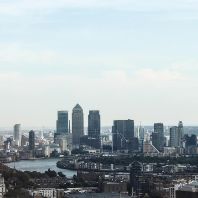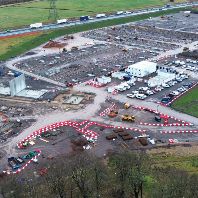Investment in central London commercial property in Q1 2011 increased by around 34% year-on-year, in an encouraging sign for the capital, according to figures from global property consultant Cushman & Wakefield. Total transactions across the capital for the first quarter totaled around £2.19 billion (approx. €2.4 billion) compared to £1.63 billion in Q1 2010.
However, this represented a decrease of 24% from the previous quarter (£2.92 billion), as a shortage of stock hampered performance. This was the first quarter showing a fall, following six consecutive quarters of increasing investment. Total transactions for 2010 in central London totaled around £9.9 billion, an increase of one-third on that for 2009 (£6.6 bln.). The amount of investment still falls a long way short, though, of that achieved during the property boom of a few years ago (2007: £19.42 bln.; 2006: £14.49 bln.; 2005: £15.25 bln.).
From the figures, the City investment market appears to have been extremely active, with a turnover of £1.6 bln. and 24 transactions. However, these are heavily skewed by the final exchange and completion of approximately five major 2010 transactions, amounting to in excess of £1 bln. These include several acquisitions: the Goldman Sachs building, River Court House, Fleet Street by Joseph Lau for £280 mln.; Freshfield's HQ building, 65 Fleet Street by the Malaysian Pension Fund for £148 mln.; and the Rolls Building, Fetter Lane by Legal & General for £300 mln.
West End completed transactions totaled approximately £600 million in Q1 2011. This is significantly down the same period in 2010 (£1.06 bln.) and also on Q4 2010 (£1.5 bln.). However, these figures do not take into account the circa £850 million of transactions where contracts have exchanged in Q1 and are likely to complete in Q2. Notable acquisitions include: Belgrave House by Teachers for £108 mln., Savoy Court by USS for £45.40 mln. and 10 Old Bond Street by a private investor for £43.75 mln.
Overseas investors continue to lead the market, accounting for over 53% of deals in the City, and over 55% of deals in the West End, in Q1. Inclusive of exchanged transactions, the West End figure increases to over 65%. In the City, the majority of sales came from UK funds (51.9%). Domestically, the UK funds and PropCos continue to be active, albeit on a selective basis, and account for approximately 33% of the West End market over the first quarter.
In the City, the market remains polarized between very large investment opportunities of which there are a number approximately £2 billion worth in four buildings and much smaller opportunities. The total current availability in the City is around £2.8 billion among 34 opportunities.
Underlying this large investment product, the remaining stock is largely made up of short income stream refurbishment and/or redevelopment opportunities for which there has been extraordinary investor appetite. The best example being Centurion House, Monument Street, where around 50 viewings took place in a three-week period with a sale to Rockspring at circa £22 million.
In the West End, demand for good quality investments remains strong. The retail sector is in particular demand with overseas buyers generally at the head of the queue, but with some institutional interest for lot sizes under £50 million. Offices are also in demand, especially those with active management opportunities.
Bill Tyser, Head of City investment at Cushman & Wakefield said: "There remains a heavy weighting of international money-seeking opportunities in the market and a sweet spot remains for standing investments of between £50 - £150 million. Whilst the demand for very large investments is less, it is still active and is a reflection of the international view of London as a relatively stable market against the geo-political unrest and natural disasters experienced in recent months. The outlook for Q2 remains strong, albeit for the City the number of acquisition opportunities remains relatively narrow and dominated by large lot size















